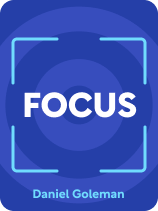

This article is an excerpt from the Shortform book guide to "Focus" by Daniel Goleman. Shortform has the world's best summaries and analyses of books you should be reading.
Like this article? Sign up for a free trial here.
What’s the difference between bottom-up processing and top-down processing? How do we use these processes?
In Focus, Daniel Goleman explores how you can understand, harness, and improve your attention to have a more productive life and become a more engaged member of society. In his discussion of how to understand attention, he explains bottom-up and top-down processing.
Continue reading to learn about these two processes.
Bottom-up Processing and Top-Down Processing
Goleman describes attention as an elusive and subtle mental asset. To help us better understand it, he highlights two system-wide processes in the brain and body—“bottom-up processing” and “top-down processing”—which we use in different ways to pay attention to ourselves and the world around us. These two processes working together help us sort through incoming information, make sense of the world, and respond.
Bottom-up processing is an involuntary cognitive process driven by raw sensory data, impulses, and emotions. Using this process, your brain constantly scans and analyzes information from your senses to gather data about the world and identify threats and opportunities. It produces subconscious, automatic attention that operates constantly in the background. With bottom-up processing, your responses to the world are rapid, instinctual, and habitual.
Top-down processing is a conscious, voluntary, and effortful cognitive process that integrates the information it receives from the bottom up and helps you deliberate and reason before responding. Through top-down efforts, you can control your attention, analyze, reason, make choices, learn new things, and make plans.
(Shortform note: Goleman’s framing of cognition as two distinct but collaborative processes closely resembles the two “thinking systems” Daniel Kahneman writes about in Thinking Fast and Slow. In Kahneman’s model, system one is automatic and unconscious, like bottom-up processing, and system two is effortful and conscious, like top-down processing. Kahneman argues that most of our decisions are made by system one without our awareness, and we are simply under the illusion that system two, our conscious thinking mind, is in control.)

———End of Preview———
Like what you just read? Read the rest of the world's best book summary and analysis of Daniel Goleman's "Focus" at Shortform.
Here's what you'll find in our full Focus summary:
- How to understand, strengthen, and use your attention to lead a more fulfilling life
- The three directions you can aim your attention: inward, toward others, and outward
- How spending time in nature restores your attention






